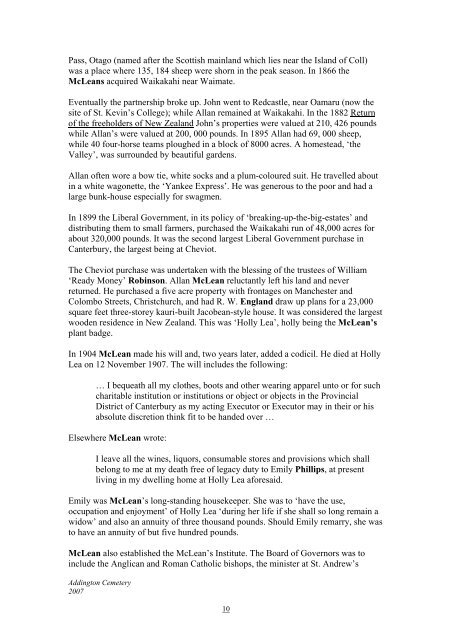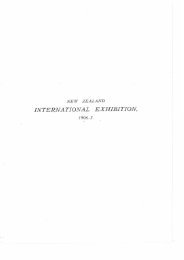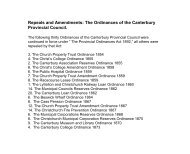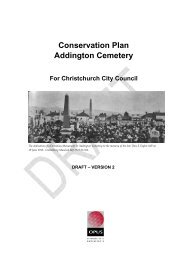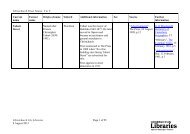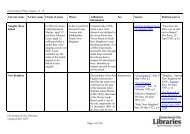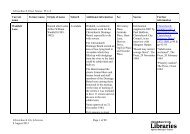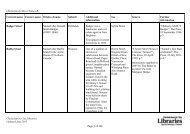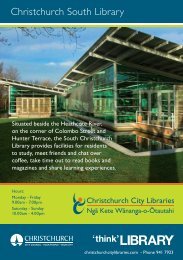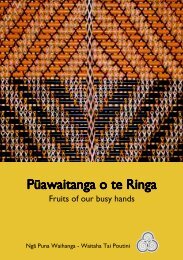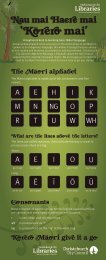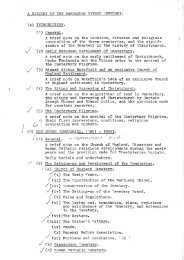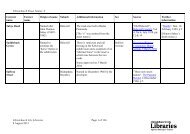Addington Cemetery Tour Guide - Christchurch City Libraries
Addington Cemetery Tour Guide - Christchurch City Libraries
Addington Cemetery Tour Guide - Christchurch City Libraries
Create successful ePaper yourself
Turn your PDF publications into a flip-book with our unique Google optimized e-Paper software.
Pass, Otago (named after the Scottish mainland which lies near the Island of Coll)<br />
was a place where 135, 184 sheep were shorn in the peak season. In 1866 the<br />
McLeans acquired Waikakahi near Waimate.<br />
Eventually the partnership broke up. John went to Redcastle, near Oamaru (now the<br />
site of St. Kevin’s College); while Allan remained at Waikakahi. In the 1882 Return<br />
of the freeholders of New Zealand John’s properties were valued at 210, 426 pounds<br />
while Allan’s were valued at 200, 000 pounds. In 1895 Allan had 69, 000 sheep,<br />
while 40 four-horse teams ploughed in a block of 8000 acres. A homestead, ‘the<br />
Valley’, was surrounded by beautiful gardens.<br />
Allan often wore a bow tie, white socks and a plum-coloured suit. He travelled about<br />
in a white wagonette, the ‘Yankee Express’. He was generous to the poor and had a<br />
large bunk-house especially for swagmen.<br />
In 1899 the Liberal Government, in its policy of ‘breaking-up-the-big-estates’ and<br />
distributing them to small farmers, purchased the Waikakahi run of 48,000 acres for<br />
about 320,000 pounds. It was the second largest Liberal Government purchase in<br />
Canterbury, the largest being at Cheviot.<br />
The Cheviot purchase was undertaken with the blessing of the trustees of William<br />
‘Ready Money’ Robinson. Allan McLean reluctantly left his land and never<br />
returned. He purchased a five acre property with frontages on Manchester and<br />
Colombo Streets, <strong>Christchurch</strong>, and had R. W. England draw up plans for a 23,000<br />
square feet three-storey kauri-built Jacobean-style house. It was considered the largest<br />
wooden residence in New Zealand. This was ‘Holly Lea’, holly being the McLean’s<br />
plant badge.<br />
In 1904 McLean made his will and, two years later, added a codicil. He died at Holly<br />
Lea on 12 November 1907. The will includes the following:<br />
… I bequeath all my clothes, boots and other wearing apparel unto or for such<br />
charitable institution or institutions or object or objects in the Provincial<br />
District of Canterbury as my acting Executor or Executor may in their or his<br />
absolute discretion think fit to be handed over …<br />
Elsewhere McLean wrote:<br />
I leave all the wines, liquors, consumable stores and provisions which shall<br />
belong to me at my death free of legacy duty to Emily Phillips, at present<br />
living in my dwelling home at Holly Lea aforesaid.<br />
Emily was McLean’s long-standing housekeeper. She was to ‘have the use,<br />
occupation and enjoyment’ of Holly Lea ‘during her life if she shall so long remain a<br />
widow’ and also an annuity of three thousand pounds. Should Emily remarry, she was<br />
to have an annuity of but five hundred pounds.<br />
McLean also established the McLean’s Institute. The Board of Governors was to<br />
include the Anglican and Roman Catholic bishops, the minister at St. Andrew’s<br />
<strong>Addington</strong> <strong>Cemetery</strong><br />
2007<br />
10


